
|
|
|
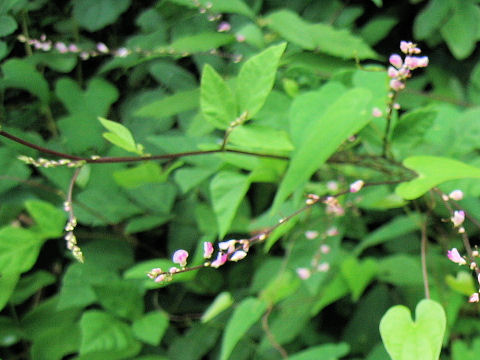 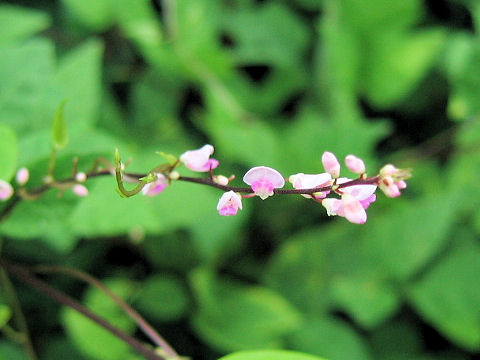 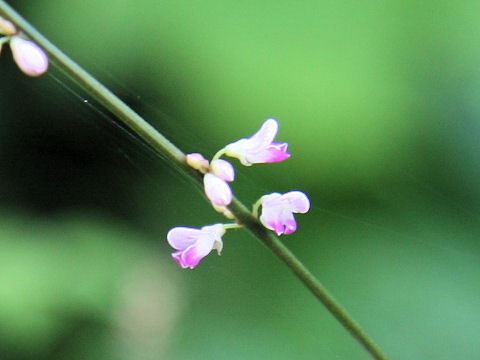 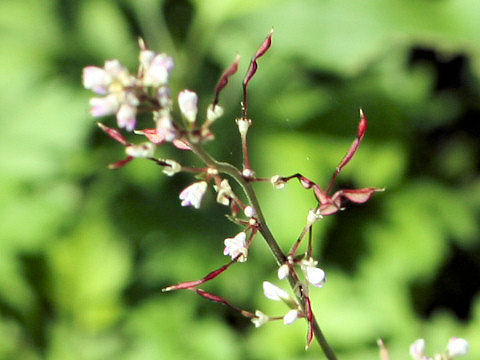 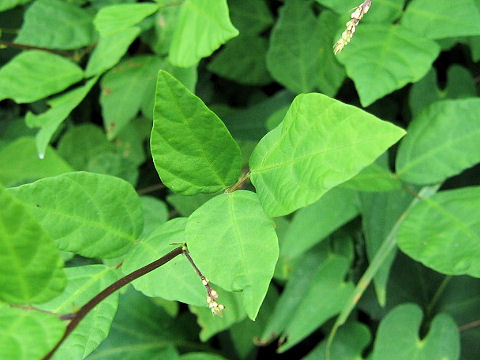 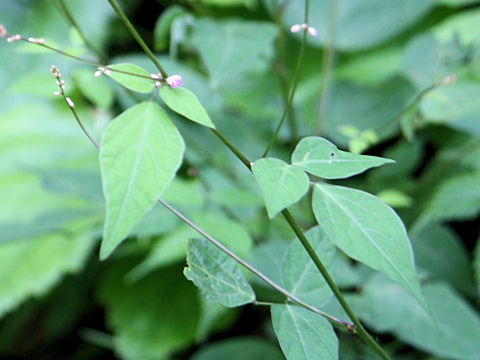 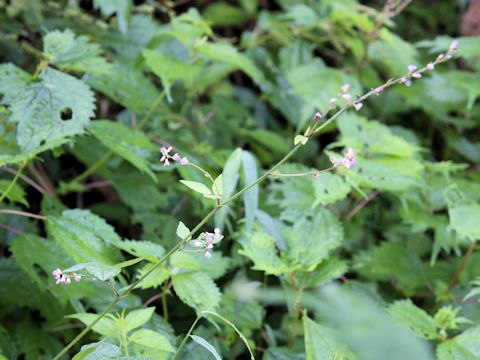 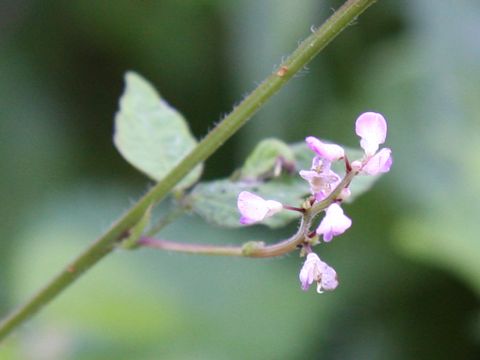 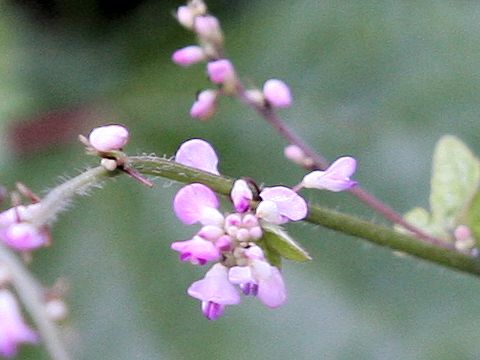 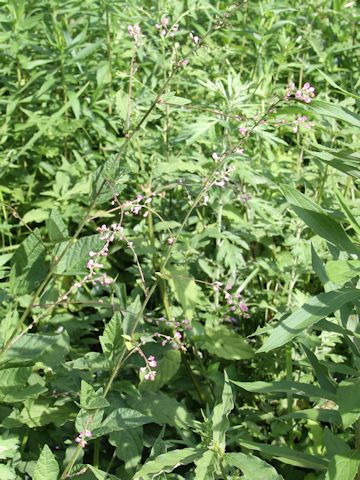 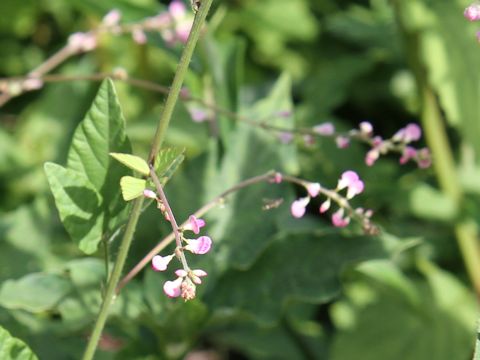 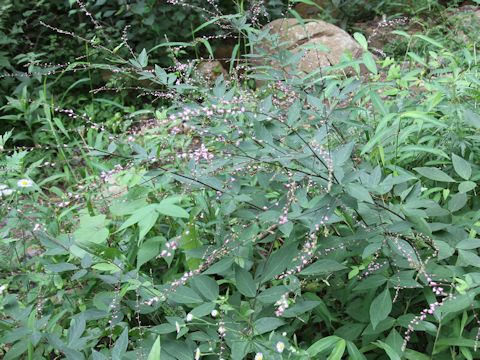 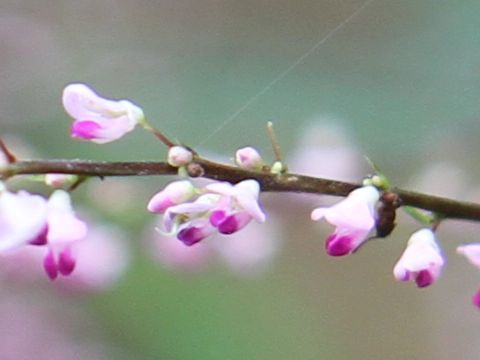 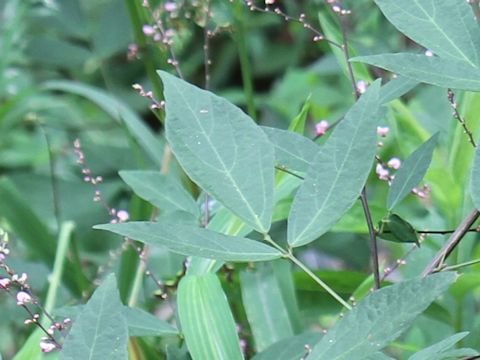 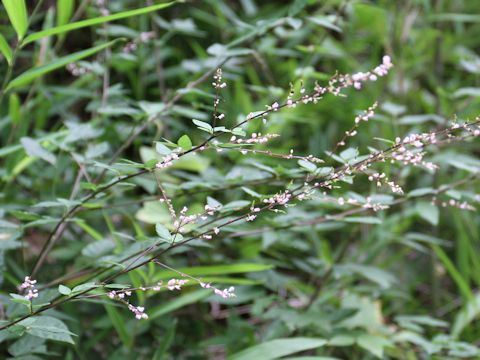 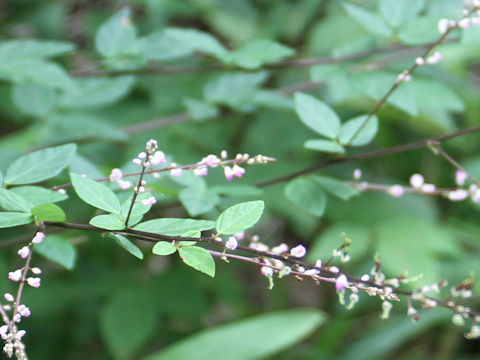 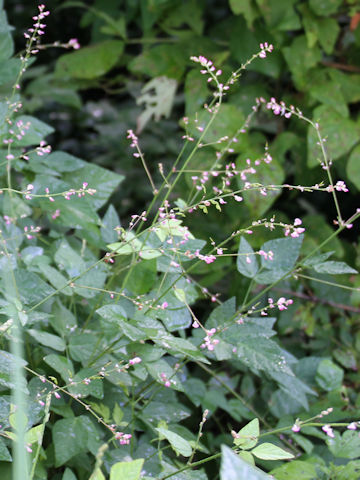 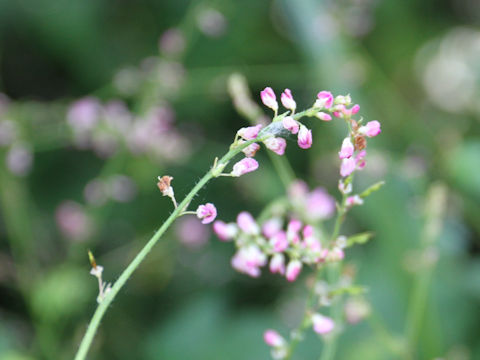 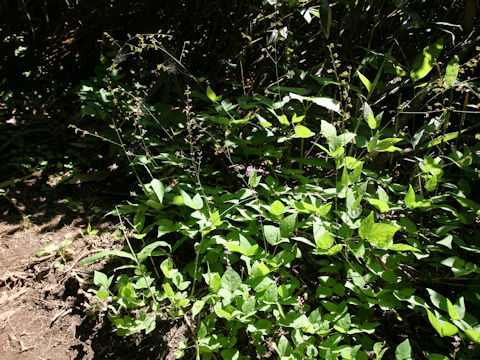 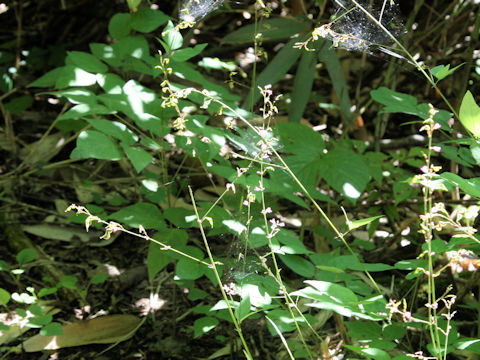 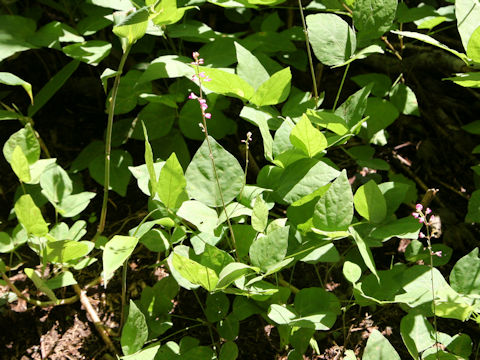 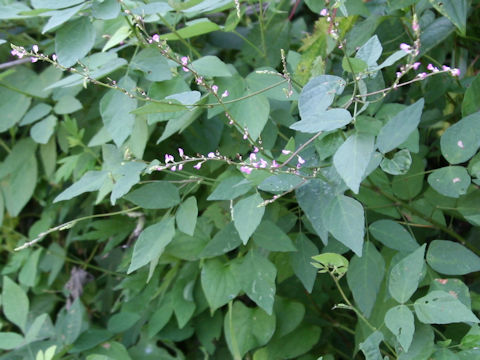 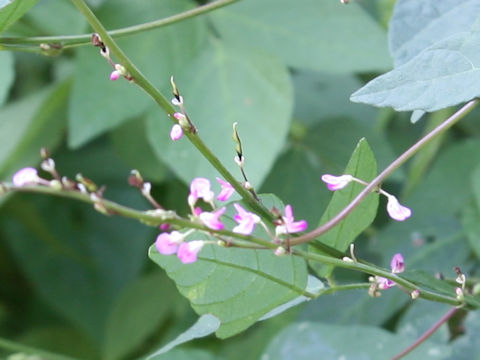 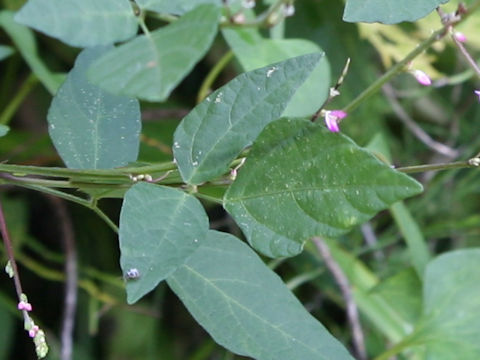 |
|
|
|
わが国の各地をはじめ、朝鮮半島や中国、ヒマラヤに分布しています。平地や山地の草原などに生え、高さは30〜120センチになります。葉は3出複葉で、小葉は卵形です。7月から9月ごろ、茎の先端や上部の葉腋に総状花序をだし、小さなピンク色の蝶形花を咲かせます。果実は節果で、ふつう小節果は2個です。節で折れた小節果には鈎状の毛があり、動物の体毛などに付着して散布されます。和名は、節果のかたちが泥棒の「忍び足の足跡」に似ているということから。中国名では「山螞蝗(shan ma huang)」。 |
|
|
マメ科ヌスビトハギ属の多年草で、学名は Desmodium oxyphyllum。英名は Thunberg's bush-clover。 |
|
|
The Thunberg's bush-clover (Desmodium oxyphyllum) belongs to Fabaceae (the Pea family). It is a perennial herb that is native to Japan, as well as the Korean Peninsula, China and the Himalaya. This herb grows in lowland to montane grasslands and can reach 30-120 cm in height. The leaves are trilobate with ovate leaflets. The racemes are borne on the stem apices and upper axiles and the small pink papilionaceous flowers bloom from July to September. The fruits are loments generally with two segments. The segment has hooked hairs and adheres to animal's hairs. The Japanese name comes from the shape of the loments, which resembles a thief's "stealthy footprints". The Chinese name is "山螞蝗" (shan ma huang). |
|
|
[上・中1・中4] 岡山県美咲町藤田上にて、2004年08月25日撮影。 [中2・中5] 長野県松本市安曇「奈川乗鞍林道」にて、2007年08月01日撮影。 [中3] 大阪府河内長野市滝畑「岩湧山」にて、2005年09月30日撮影。 [中6〜中8] 新潟県湯沢町三俣にて、2010年09月05日撮影。 [中9・中10] 栃木県日光市中三依「湿生園」にて、2013年08月24日撮影。 [中11〜中13] 茨城県桜川市「筑波山」にて、2014年08月23日撮影。 [中14・中15] 茨城県かすみがうら市「雪入ふるさとの里公園」にて、2016年07月17日撮影。 [中16・中17] 山形県小国町小玉川にて、2018年08月19日撮影。 [中18〜中20] 岩手県滝沢市「鞍掛山」にて、2022年08月22日撮影。 [中21〜22・下] 宮城県白石市小原にて、2023年08月17日撮影。 |

|
|
Shu Suehiro |